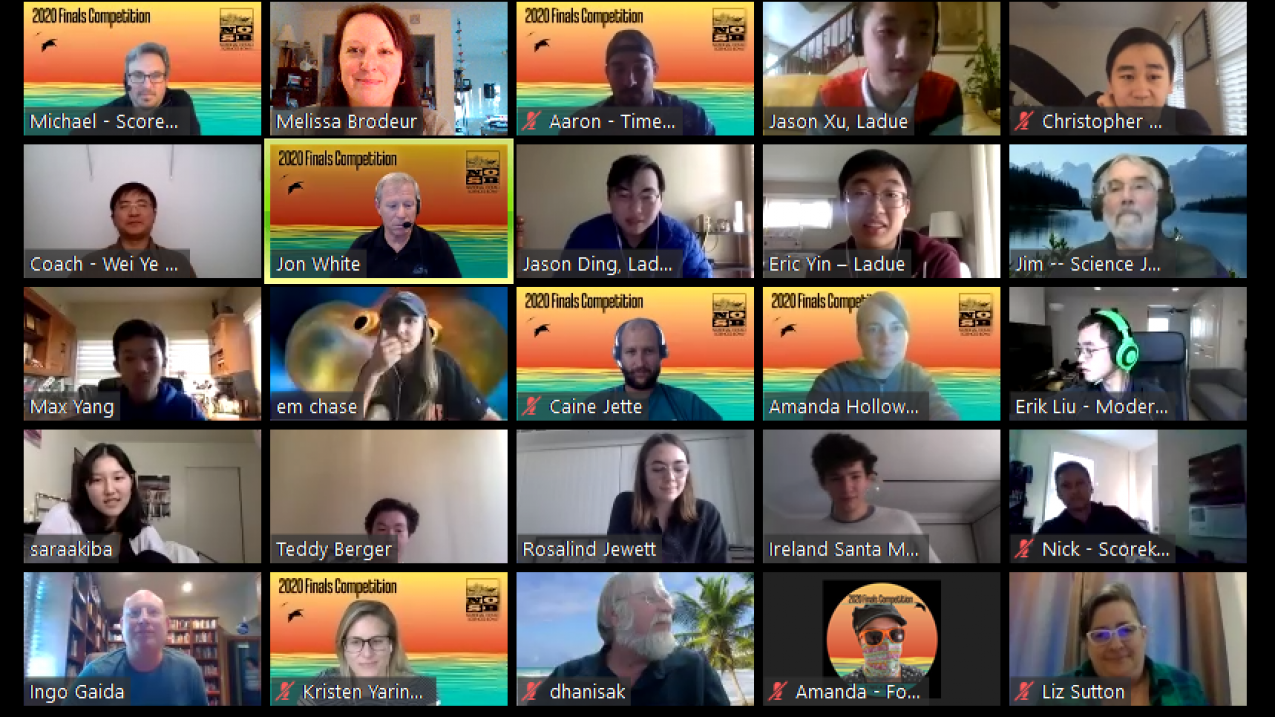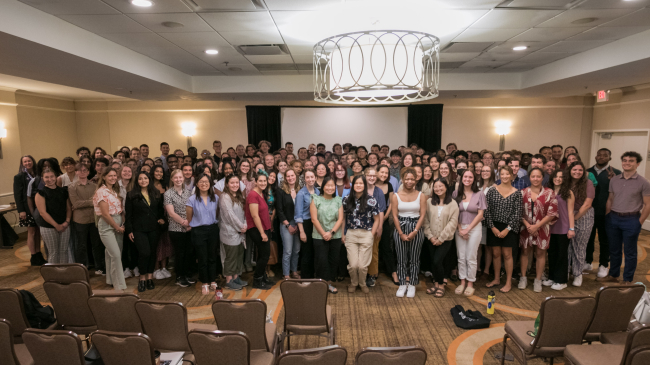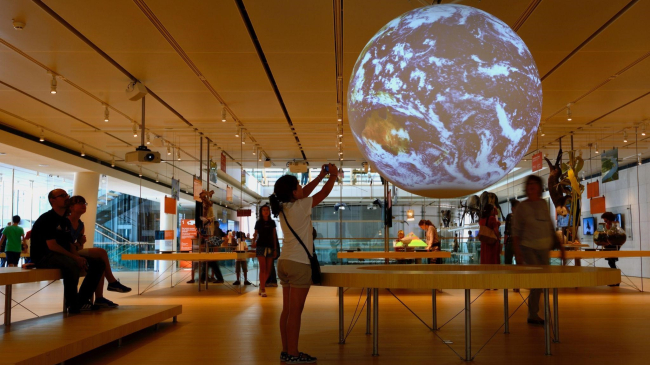For the first time in nearly a quarter of a century, teams of high school students participated in the 2020 National Ocean Sciences Bowl offsite link (NOSB) Finals from their own homes due to the ongoing public health response to COVID-19. Thanks to the extraordinary contributions of the NOSB staff, partners, participants, and dedicated volunteers, 19 student teams, who previously won their regional competitions, competed to test their knowledge of — and show their passion for — ocean science.

Teams of high school students met with judges over virtual meetings during the all-virtual 2020 National Ocean Sciences Bowl Finals. (Image credit: Consortium for Ocean Leadership)
This competition, which took place from April 16–25, marked the 23rd year of the annual NOSB. Organized by the Consortium for Ocean Leadership offsite link, the NOSB uses friendly academic competition to foster knowledge of the marine sciences. Participants go above and beyond their normal high school science curriculum, diving deep into the marine sciences through biology, chemistry, physics, and geology. Above all, the NOSB aims to generate student interest and excitement about the ocean sciences both as an in-depth field of study and as a possible career path.
In the past, the NOSB Finals have taken place in person in a high-energy, head-to-head competition. The move to a virtual format in response to COVID-19 meant that some aspects of the event needed to be adjusted. Normally, the NOSB Finals are held over an action-packed weekend, but this year, the event was spread out over 10 days, with teams meeting with judges separately for some events. The opening ceremony and other events were held virtually, and instead of “buzzing in” during the buzzer competition, teams simply typed “B” into the chat boxes of their virtual meeting.
“Despite some of the impediments of participating remotely from different time zones, the students showed the same camaraderie and competitive spirit seen in face-to-face competitions,” says Sarah Schoedinger, a senior education program manager with NOAA.
NOAA has been a key NOSB partner since the competition’s inception in 1998. Together, five of the NOAA line offices and the Office of Education’s Environmental Literacy Program have provided more than $14 million in financial support. Just as importantly, NOAA personnel have shared their expertise and career experiences by volunteering at regional and national events year after year.
In 2020, a total of 287 teams from 216 schools in 30 states competed in regional contests. More than 1,300 exceptional students demonstrated their knowledge of the ocean and its role in Earth system science through this year’s theme of “Understanding Human, Economic and Environmental Resiliency in the Gulf of Mexico,” an exploration of the Gulf as a dynamic system with complex, interconnecting human and environmental systems. The 2020 NOSB Finals coincided with the 10th anniversary of the Deepwater Horizon oil spill — our country’s largest marine oil spill. A decade later, this catastrophic event continues to exemplify the challenges and risks in the Gulf of Mexico, and further provides an opportunity to learn more about the Gulf’s importance due to its enormous economic, ecological, and cultural value.
The following 23 regional winners qualified to compete at the national finals. The need to move the competition to an all-virtual format spread over 10 days meant that four of the 23 teams were not able to compete in the finals (an asterisk denotes which teams competed in the virtual final competition).
- South Anchorage High School (Anchorage, Alaska)
- Arkansas School for Mathematics, Sciences, and the Arts (Hot Springs, Arkansas)*
- Canyon Crest Academy (San Diego, California)*
- Dougherty Valley High School (San Ramon, California)*
- Santa Monica High School (Santa Monica, California)*
- Fort Collins High School (Fort Collins, Colorado)*
- Westwood Marine and Oceanographic Academy (MOA) (Ft. Pierce, Florida)*
- Gainesville 4-H (Gainesville, Florida)*
- Rockdale Magnet School for Science and Technology (Conyers, Georgia)
- Punahou School (Honolulu, Hawaii)*
- Lead for Future Academy (Clarksburg, Maryland)
- Lexington High School (Lexington, Massachusetts)*
- Troy High School (Troy, Michigan)*
- Gulfport High School (Gulfport, Mississippi)
- Ladue Horton Watkins High School (St. Louis, Missouri)*
- West Windsor-Plainsboro High School North (Plainsboro, New Jersey)*
- Mount Sinai High School (Mount Sinai, New York)*
- Raleigh Charter High School (Raleigh, North Carolina)*
- Centerville High School (Centerville, Ohio)*
- Benson Polytechnic High School (Portland, Oregon)*
- Narragansett High School (Narragansett, Rhode Island)*
- Catholic High School (Virginia Beach, Virginia)*
- Newport High School A Team (Bellevue, Washington)*
On April 20, high school students from Ladue Horton Watkins High School of St. Louis, Missouri, won the 2020 National Finals buzzer competition. These students first competed at the Lake Sturgeon Bowl hosted by the University of Wisconsin–Milwaukee School of Freshwater Sciences. It was the high school’s second appearance at the national finals and their first national title. On April 25, Newport High School, which competed in the Orca Bowl hosted by Washington Sea Grant at the University of Washington, came in first for the Science Expert Briefing part of the competition and sixth overall.
All teams were honored in a virtual award ceremony on Saturday, April 25. Congratulations to the teams and to NOSB for another successful year of competition!



